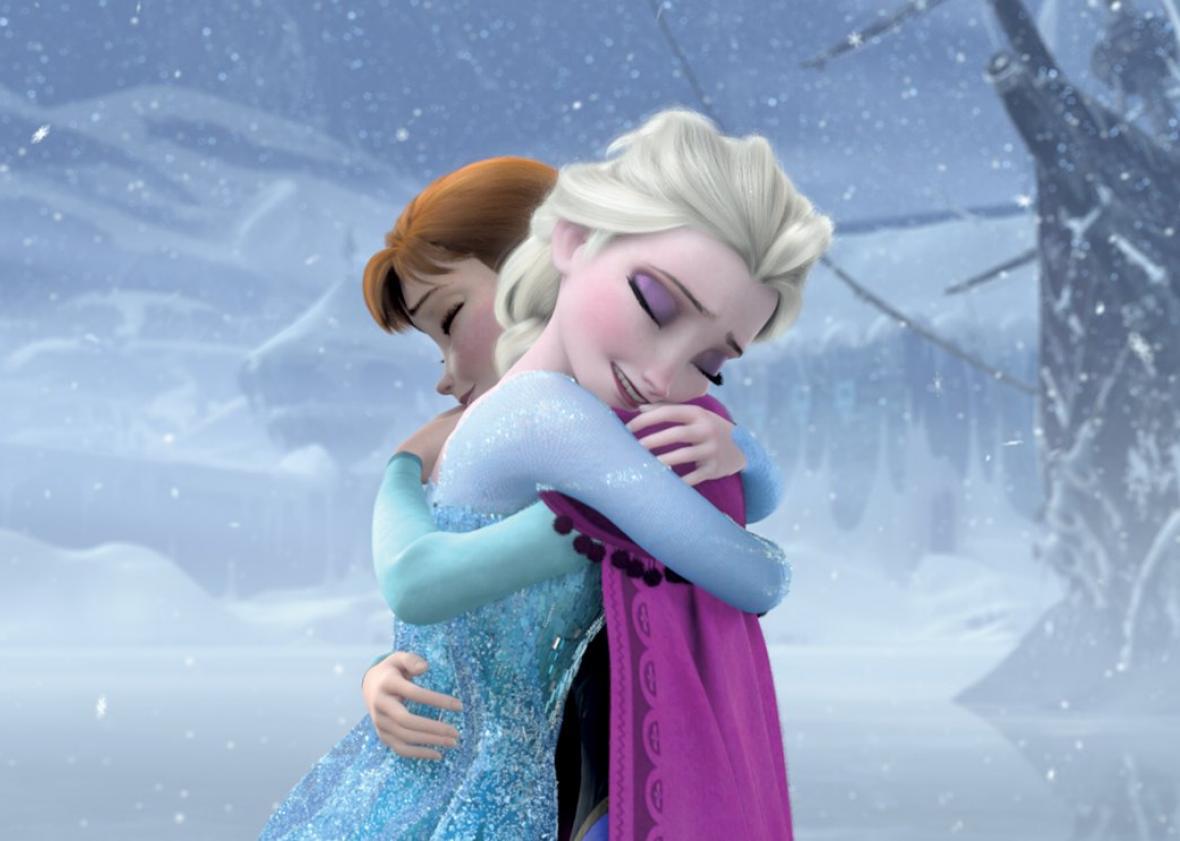Just when we finally got “Let It Go” out of our heads, Frozen pops up again to put it right back between our ears. As part of Entertainment Weekly’s “Untold Stories” series, Frozen producer Peter Del Vacho has shared some background information about the 2013 animated smash, including some interesting tidbits about how the final version’s story differs from early drafts.
Turns out we almost got a much more conventional Frozen, one that more closely resembled the original Hans Christian Andersen fairy tale “The Snow Queen” than the film we ultimately saw in theaters. Elsa was a villain, she and Anna weren’t sisters, and there was supposed to be a grand prophecy at the center of the story. Here are just some of the things we learned from Del Vacho’s interview:
How Elsa went from traditional villain to tragically misunderstood.
We already knew that early drafts of Frozen had Elsa as a much more villainous character, with blue skin and a coat made of living weasels. (That would certainly have made for some interesting Halloween costumes in 2014, but I digress.) Del Vacho offered some more specific insight about what kind of character Elsa might have been: a woman who was jilted at the altar and then froze her heart so that she would never love again. But in the end, they decided that the character was too conventional and needed some more ambiguity.
The movie was originally going to open with a prophecy.
Because who doesn’t love a good prophecy? In this case, the film was meant to start off with a prediction that “a ruler with a frozen heart will bring destruction to the kingdom of Arendelle.” In that version, the audience would believe that the prophecy referred to Elsa, whose heart was literally frozen, but instead it would be revealed that Hans’ metaphorical frozen heart made him the real subject. That was all avoided when Elsa became a less traditional villain.
A lot of work and consideration went into that “true love’s kiss” twist.
Anna and Elsa weren’t originally sisters but a peasant and a self-proclaimed ruler, and a lot of thought went into making them siblings instead. “Making them related led us to the idea of [Elsa] living in fear of her powers,” Del Vecho told EW. “We had a character in Anna who was all about love and Elsa who was all about fear […] Instead of the traditional good vs. evil theme we had one that we felt was more relatable: Love vs. fear, and the premise of the movie became that love is stronger than fear.” That led to the new ending we saw in theaters, in which Anna’s sisterly love, rather than the love of a male lead, is what saves Elsa.
One version of the ending involved an avalanche and an army of snow monsters.
Imagine an entire army of Olafs, and then shudder at how narrowly we escaped that fate.
